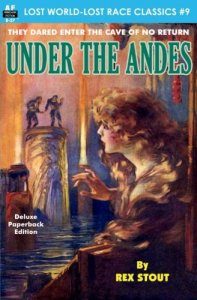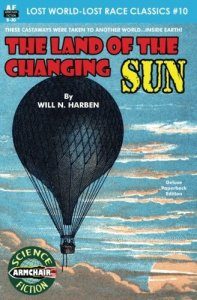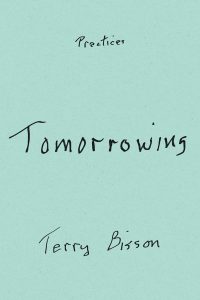Paul Di Filippo reviews Three Lost World Novels
The Yellow God, by H. Rider Haggard (Armchair Fiction 978-1536920727, $12.95, 232pp, trade paperback) August 2016
Under the Andes, by Rex Stout (Armchair Fiction 978-1536920802, $12.95, 248pp, trade paperback) August 2016
The Land of the Changing Sun, by Will N. Harben (Armchair Fiction 978-1537196312, $12.95, 184pp, trade paperback) August 2016
 Does any genre of fiction ever actually become extinct? And if a genre does go extinct, does that mean that its subject matter, its core material and reason for existing, has no relevance or holds no interest any longer for a contemporary audience?
Does any genre of fiction ever actually become extinct? And if a genre does go extinct, does that mean that its subject matter, its core material and reason for existing, has no relevance or holds no interest any longer for a contemporary audience?
Most long-time readers can adduce a few genres that, if not extinct, have decidedly gone out of fashion. Westerns once seemed on the verge of disappearing entirely, but while they are certainly not produced in the vast numbers of yore, they do persist at some level. What about “nurse novels?” Fiction about the medical profession continues, and such novels might include nurses. But novels exclusively featuring young women seeking a certain rare independent path through the working world, with elements of romance and danger, do not leap off the shelves these days.
Does the YA field still include books about kids who love horses? As a tween, I used to find such books fascinating. (They seemed to come mostly from Whitman press.) I see that Amazon features an “Equestrian” category under its YA headings, so I guess the love persists in a new generation. Jacobean revenge plays are no longer being written, but you could probably make the case that some crime or thriller novels perform essentially the same function.
But the sub-genre of fantastika known as the “Lost World” or “Lost Race” novel seems pretty well kaput. As a function of humanity’s ignorance about certain parts of our planet, these books lost all basis in realism as the globe became fully mapped. The possibility of antediluvian beasts persisting in such venues, as in the classic by Conan Doyle, The Lost World, grew even more impossible as science progressed.
I suppose one could write a classic Lost World novel nowadays by either of two expedients. You could do one that was set in the historical past, so that the events and venue become merely an unrecorded bit of interstitial history. Or you could instantiate a contemporary Lost World by hiding it down some alternate dimension or behind some veil. This is what Marvel Comics does with its maintenance of the Savage Land. But setting a Lost World inside some spacetime flaw rather classes it as a portal fantasy—Narnia as Lost World. The closest one might come to the real spirit and still remain plausible is in such a novel as China Miéville’s The City & the City.
The genre still remains readable, however, if we merely suspend our disbelief a little harder than with other genres. And thanks to Greg Luce at Armchair Fiction, we can enjoy new editions of some lesser-known classics from their “Lost World-Lost Race” series.
Installment number eight in that roll call comes from one of the masters of the species, H. Rider Haggard. It’s cast along the same lines as his monumental She, but it’s thinner and less archetypically resonant, dealing more with the quotidian than the eternal. Also, given its 1908 publication date, when Haggard was fifty-one (though still with some seventeen years to live and another two dozen novels in him) and when the era of High Victorianism was coming to a close, the book could never fully reach the giddy heights of the famous one.
In London, two “respectable” businessmen scam artists, Aylward and Champers-Haswell, are about to launch a public offering for bonds to fund a wild scheme to flood the Sahara and make it into a paradise. They have enlisted the good name and services of the innocent young engineer, Major Alan Vernon. But Alan tumbles to their schemes and resigns, preferring to remain poor, with reputation unsullied. Naturally, this puts him at a disadvantage in his plans to marry his lady love, Barbara, niece of Champers-Haswell.
So Alan, heeding the old tales of his man-servant Jeekie, an expatriated native of the mysterious Asiki-land in Western Africa, resolves to return a family heirloom, the frightening mask of the goddess known as Little Bonsa, to the tribe and claim a rich reward of gold. Before you can say “Up the Qua River without a paddle,” Jeekie and Alan are deep into uncharted territory. After many ordeals, they enter into Asiki-land and discover that the religion of Little Bonsa is embodied in a beautiful priestess, the Asika, who channels the thousands of years of memories of her lineage. She takes a different husband every year—with the used-up one handily committing suicide—and she has determined that Alan is next in line. The remainder of the book charts the unnatural romance between the two, followed by the thrilling escape of Alan and Jeekie, their revenge upon Aylward, and the final reunion with Barbara.
The book’s first seven chapters, a third of the wordage, are set in the UK, and relatively sparse in the supernatural. This mercenary milieu casts its tone over Alan’s motives and the rest of the book, which is, in the end, merely a quest to get rich on Alan’s part. The spiritual and carnal back and forth with the Asika is never torrid, and she too seems a very quotidian goddess. As always in Haggard, it’s the black man, Jeekie, who is probably the smartest and most practical character, and he saves the day numerous times. While eminently readable and never boring, The Yellow God lacks that hypnotic and mystic resonance of Haggard’s best work.
 Surely the reputation of Rex Stout will rest forever on his Nero Wolfe mysteries, and not Under the Andes, which constitutes only his second novel, written when he was twenty-eight. And yet the latter is nothing to be ashamed of. It’s a wild-eyed roller coaster of an adventure, vividly and deftly narrated by its hero. While not packed with any manner of anthropological complexity, it’s a kind of A. Merritt extravaganza. And unlike the Haggard novel, with Stout being of a different generation, it’s full of proto-Jazz Age insouciance and brio.
Surely the reputation of Rex Stout will rest forever on his Nero Wolfe mysteries, and not Under the Andes, which constitutes only his second novel, written when he was twenty-eight. And yet the latter is nothing to be ashamed of. It’s a wild-eyed roller coaster of an adventure, vividly and deftly narrated by its hero. While not packed with any manner of anthropological complexity, it’s a kind of A. Merritt extravaganza. And unlike the Haggard novel, with Stout being of a different generation, it’s full of proto-Jazz Age insouciance and brio.
Our teller of the tale is one Paul Lamar. He and his younger brother Harry are idle society lads, able to drop ninety thousand dollars while gambling without too much concern. Paul is the more responsible chap, and worries that Harry is too wild.
Into their New York social set comes one Desiree Le Mire, the most beautiful woman in the world, who has left behind a string of broken hearts and suicides in Europe. The Lamars vie for her favors, Paul only half seriously. She and Harry run away out West. Paul, worried, tracks them down. The trio decides to be all just good friends, not lovers. They embark on a pleasure cruise. In South America they decide to go mountaineering. Their native guide brings them to the “Devil’s Cave,” where, legend has it, a troop of ancient Incas once took refuge from the Spaniards. Madcap Desiree impulsively dashes inside, and immediately falls into a chasm. The lads follow in the helpless descent, but are separated from the woman.
Here ensues an odyssey through blind darkness. (And it’s a testament to Stout’s skill that he conveys the action interestingly without visual references.) The brothers eventually stumble into an enormous lighted cavern. There they see a naked Desiree dancing before a tribe of bestial devolved Inca descendants, including their froglike King.
From here it’s one mad dangerous event after another, into and out of captivity, battling underworld monsters, both human and otherwise. Finally, with escape in sight, tragedy strikes. We end with Paul recounting the adventures from the safety of his familiar mansion.
Stout’s frankness in sexual matters, and his breezy yet affecting portrayal of both heroism and selfishness, as well as his ability to conjure up creepy situations, make this book a sterling example of pulp bravado.
 Haggard and Stout are familiar names, but not so with Will N. Harben, author of The Land of the Changing Sun, apparently his only SF novel. His foray into the Lost World genre is a tad clunky, with a kind of “As you can plainly see, visitors…” vibe about it. But it is earnest and quick-moving and just gonzo enough to remain enjoyable.
Haggard and Stout are familiar names, but not so with Will N. Harben, author of The Land of the Changing Sun, apparently his only SF novel. His foray into the Lost World genre is a tad clunky, with a kind of “As you can plainly see, visitors…” vibe about it. But it is earnest and quick-moving and just gonzo enough to remain enjoyable.
Two adventurers, Johnston the American and Thorndyke the Englishman, are lost in their damaged hot-air balloon, drifting out over the Atlantic. They see a distant uncharted island, their only hope, and engineer their descent. On the island they resign themselves to being castaways. But the island features a lake, and from the depths of this lake arises a submarine! They are taken aboard by Captain Tradmos, and sink to the bottom of the lake. The craft enters a tunnel, and comes up in an underground grotto. From there, an elevator brings them further under the earth. They emerge into a paradise!
An immense cavern, lighted by an artificial sun on tracks, is populated with perfect specimens of humanity, bred by the magical atmosphere: the kingdom of Alpha, ruled by a benevolent king, along with his gorgeous daughter, the rather unfortunately named Princess Bernardino. It’s a utopia, founded some time back by a commune from the world we know. But the realm is not for outsiders such as Johnston and Thorndyke. Thorndyke is allowed to remain as a circumscribed guest at court, but the more reprehensible Johnston is exiled to the Barrens, the “dead lands beyond the sun.”
The narrative splits in two now. We follow Johnston’s exploits as he teams up with a native, Branasko, as they seek to escape their Coventry. Meanwhile, Thorndyke and Princess Bernardino fall in love.
However, all mundane concerns are put into perspective by an earthquake that opens up a rift all the way up to the Atlantic. Salt water begins to pour in. A daring venture temporarily seals the rift, giving the king enough time to come to his senses and call for the gradual immigration of all his citizens to the surface world.
Harben’s main fascination for us is with the eugenic attitude of the “Alphians.” Perfect physical specimens, they nevertheless reveal in their rigid ideology and elitism that a fine appearance can disguise a blackness of heart. It’s an eternally good moral.
These three Lost World novels and their ilk continue to speak to a modern audience about an era akin to the medieval conceptions of Prester John, when marvels were believed to exist around every bend of the road. Writers such as Philip Jose Farmer derived much inspiration from such tales, and surely, mutatis mutandis, we can too.





